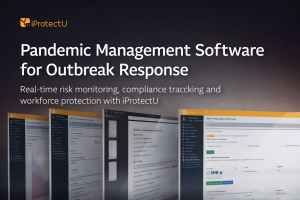Overview
Legionella is a genus of pathogenic bacteria, commonly found in natural freshwater environments, such as rivers, lakes, and streams.
Legionella becomes a significant health concern when it contaminates engineered water systems such as plumbing systems, water tanks, cooling towers, and fountains, where conditions can allow it to multiply. When people inhale aerosol droplets of water contaminated with Legionella, they can become infected.
Legionella bacteria can cause two main illnesses:
- Legionnaires’ disease: A severe form of pneumonia that can be fatal if left untreated. Symptoms include fever, cough, chest pain, shortness of breath, and confusion.
- Pontiac fever: A milder illness with flu-like symptoms, such as fever, chills, headache, and muscle aches.
Legionella infections can lead to long-term health issues, such as respiratory difficulties and cognitive impairment. In addition to health risks, Legionella exposure can also cause legal and financial implications and disruption to education. The risk should be made as low as practically possible. It is important for those in charge of school health and safety to be fully aware and up to date with the latest legislation, local water safety guidance and best practices.
Water safety management considerations are operational. As such, a good starting point for a school would be to commission a site-specific Legionella risk assessment.
Risk Assessment
The Legionella management process begins with a thorough review of all aspects of the water systems. Identifying the risk factors within the school building(s) is essential and this can be done by carrying out a detailed Legionella risk assessment.
Legionella risks within a school may vary depending on the nature and size of the buildings but they will include both the hot and cold-water components of the system. Showers, sinks, water heaters, and storage tanks are all likely to be present as well.
The risk assessment will identify areas of risk and set out the steps that need to be taken by the school to maintain the safety of the water system. This will include whether the risks from Legionella can be minimised or if they could be removed altogether. The assessor will develop a Legionella control plan based on their assessment, helping the school meet its compliance obligations and keep staff, students and others safe.
In many cases, due to the complexity of a school water system, it is easier to call in an expert to conduct the Legionella risk assessment on behalf of the school safety team. Either way, it is vital that the assessor has the necessary skills, experience and training to carry out this specific assessment.
Health and Safety Training
As previously mentioned, the Legionella risk assessor should receive specific, certified training in this area, from a recognised provider. Those responsible for managing safety in the school premises day-to-day, for example premises staff, should be clear on what is required under health and safety law, and what needs to be done. Clarity at all stages of the process is crucial.
Provide premises staff with training on Legionella awareness, prevention, and response. Educate all staff on the importance of reporting any unusual water conditions or symptoms.

Planned Preventative Maintenance
Based on the risk assessment, this may include regular maintenance, removal of problem areas and periodic water testing. We have included some guidelines below, however, be sure to refer to your local health and safety body and your school Legionella risk assessment.
Water Systems
Inspect, clean, and disinfect hot water systems, cooling towers, and humidifiers regularly. Ensure adequate water temperature (60°C or higher) in hot water systems. Monitor and maintain water quality in school drinking fountains and other outlets.
Plumbing and Fixtures
Inspect plumbing systems for leaks and corrosion. Clean and disinfect shower heads, faucets, and other fixtures on a regular basis. Ensure there is proper drainage and ventilation in school bathrooms and other areas.
Maintenance and Cleaning
Develop and implement a maintenance schedule for water systems. Train staff on suitable cleaning and disinfection procedures. Regularly inspect and clean school air conditioning units and ventilation systems.
It is essential to be able to prove how school Legionella risks have been identified, managed and controlled. Keep records of the precautions you put in place and what you do, such as evidence of an in-depth Legionella risk assessment, checks, and cleaning processes. Staff training and competence is another area that is sometimes neglected, so records of training courses and qualifications should also be recorded.
Water safety management procedures, with regard to the prevention of Legionella bacteria, should be outlined in the school health and safety policy.
Schools should ensure they are fully prepared for the unknown
Those responsible should develop an emergency response plan for Legionella outbreaks. It is also a good idea to maintain a supply of necessary equipment and materials for responding to outbreaks. However, there is no reason for an outbreak of Legionnaires’ disease to occur in any school, if the proper steps are taken with regard to water safety. Setting up a competent team to manage this, providing adequate training, and seeking advice from outside experts where necessary, all have a role to play.








